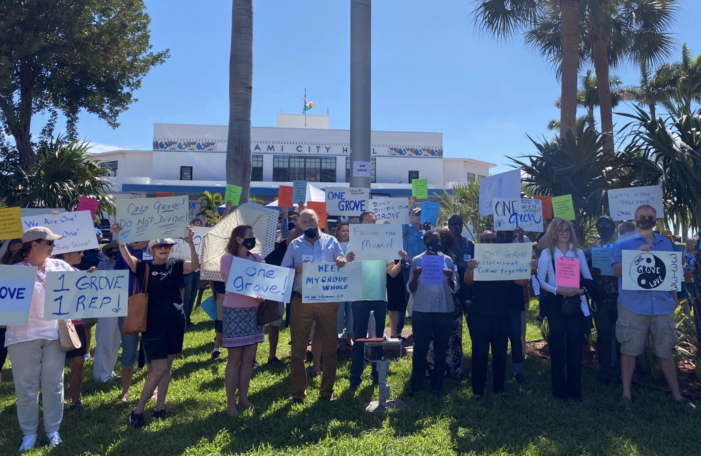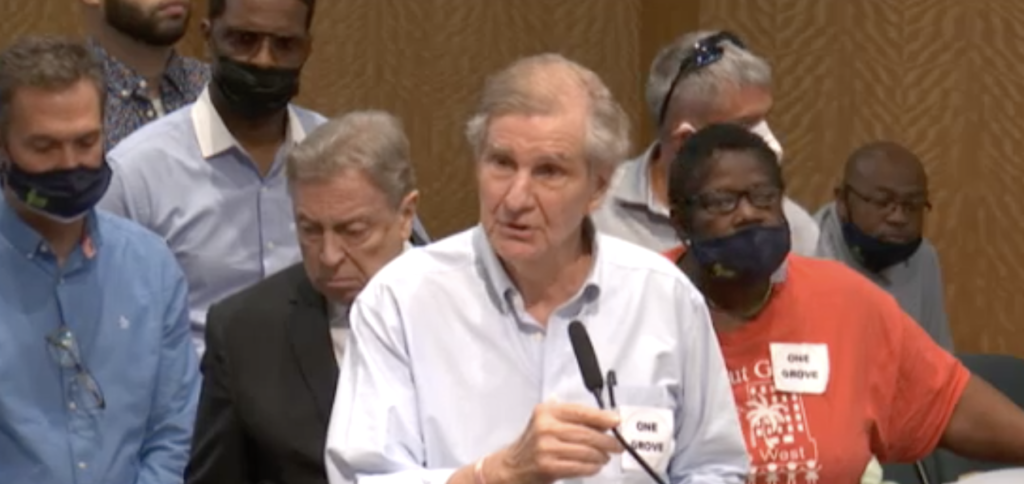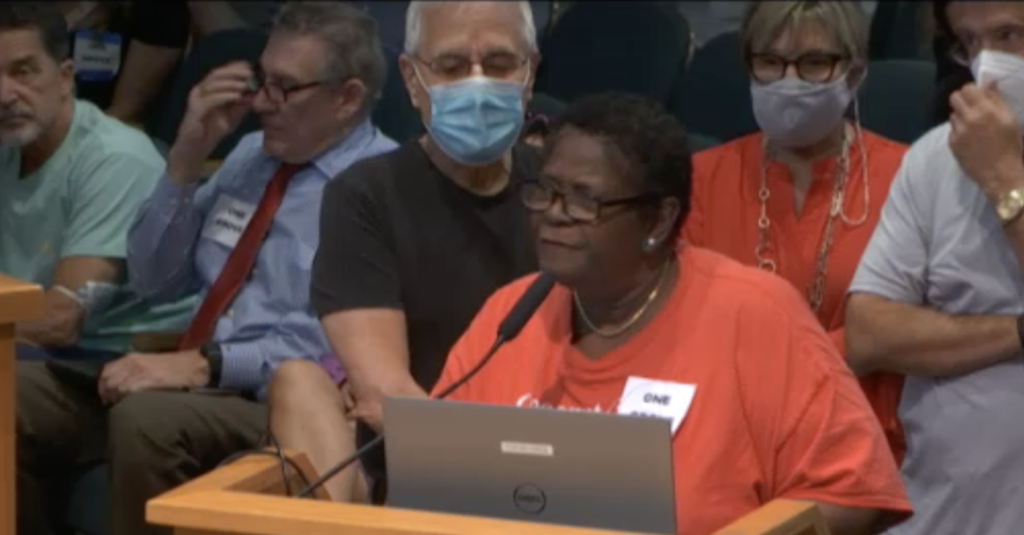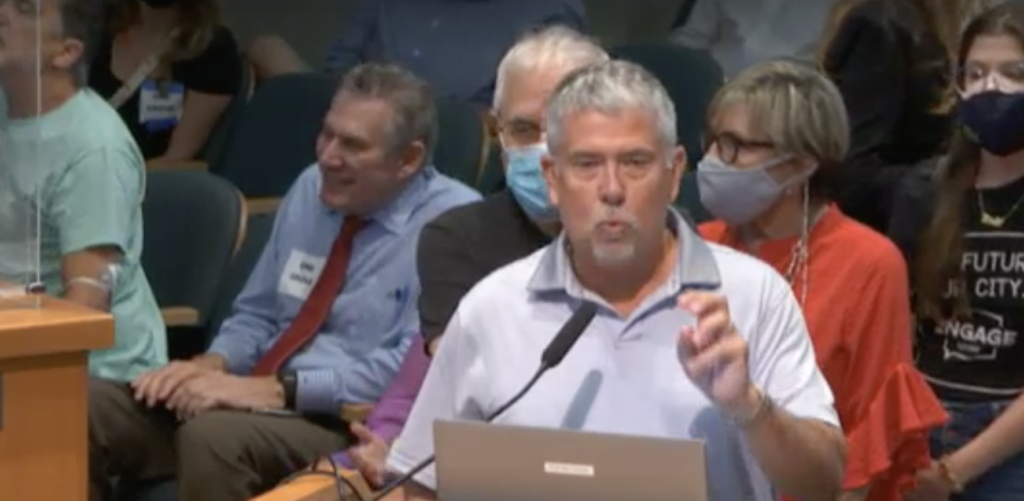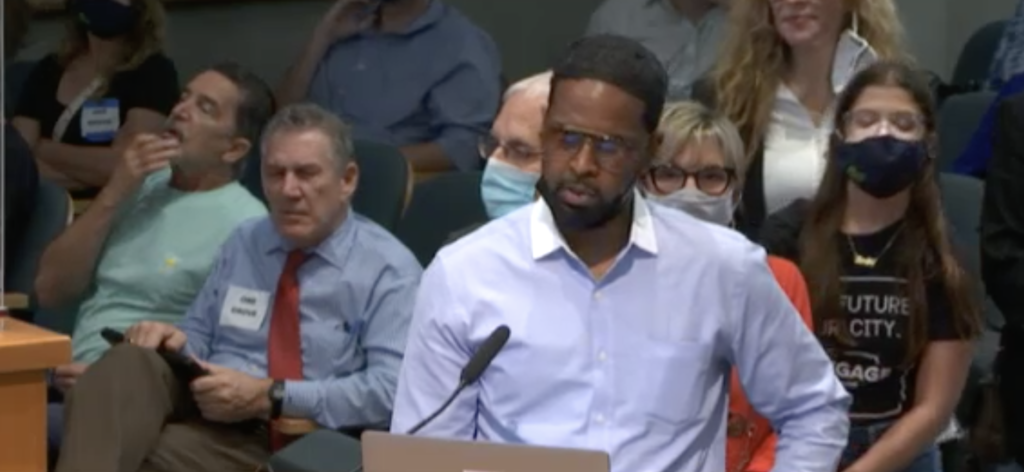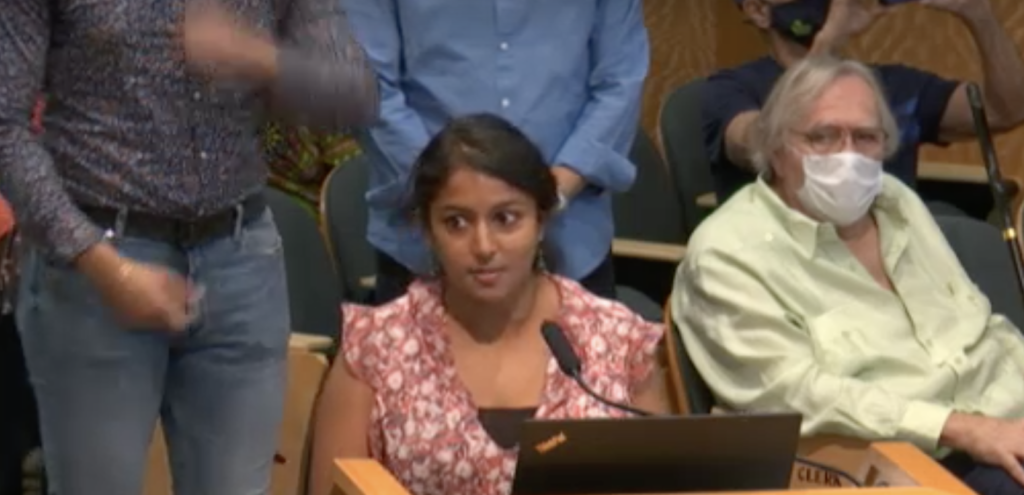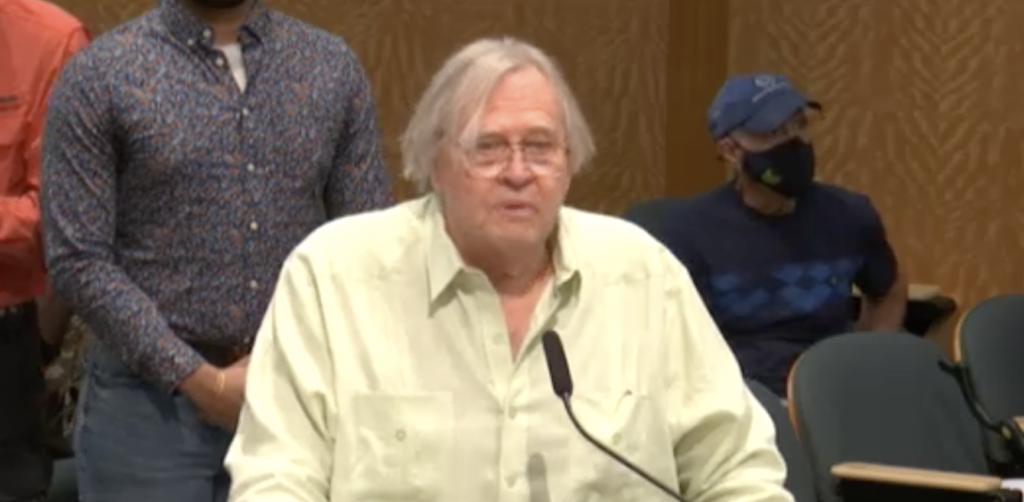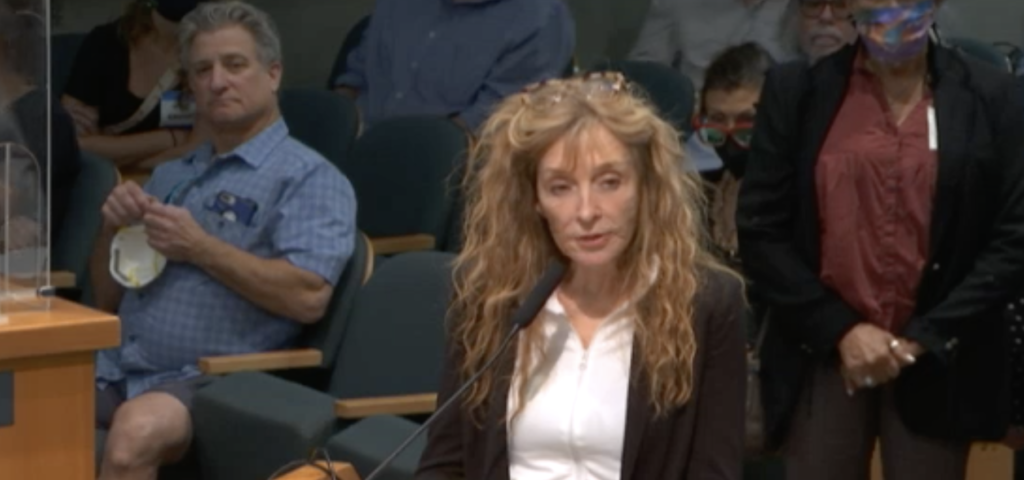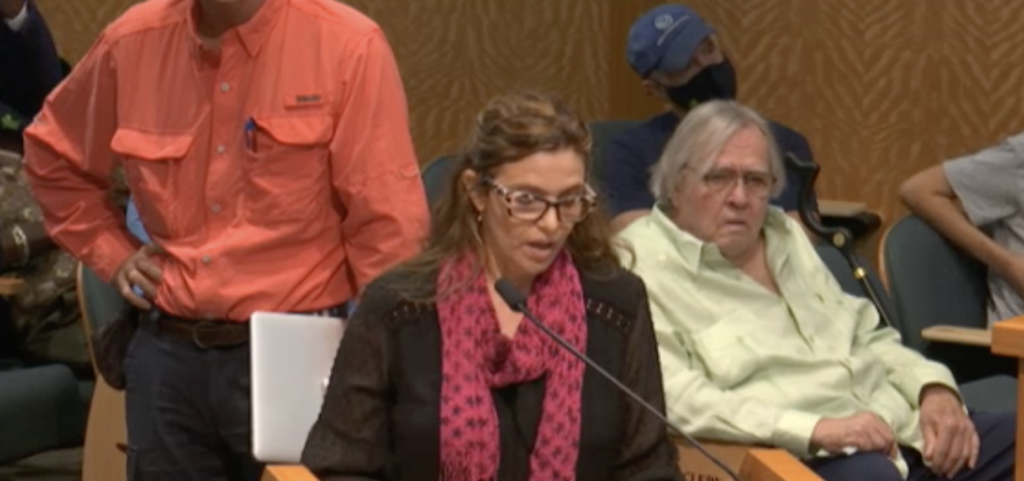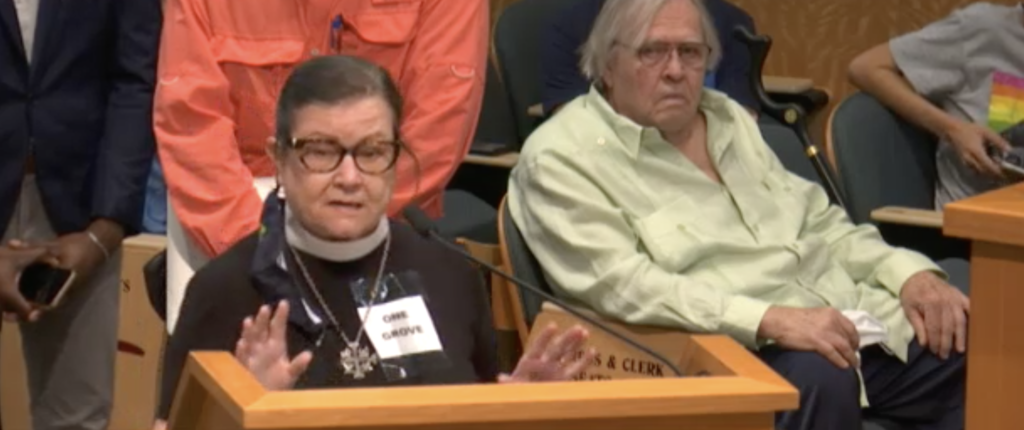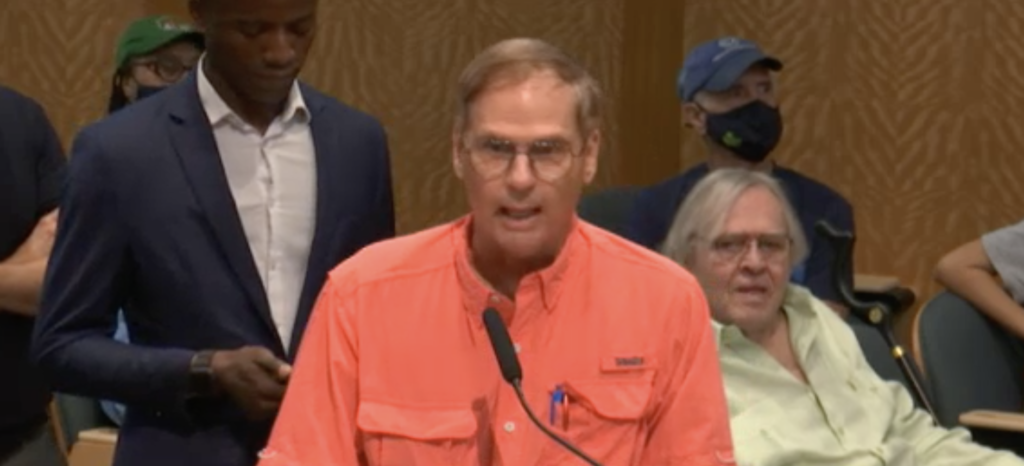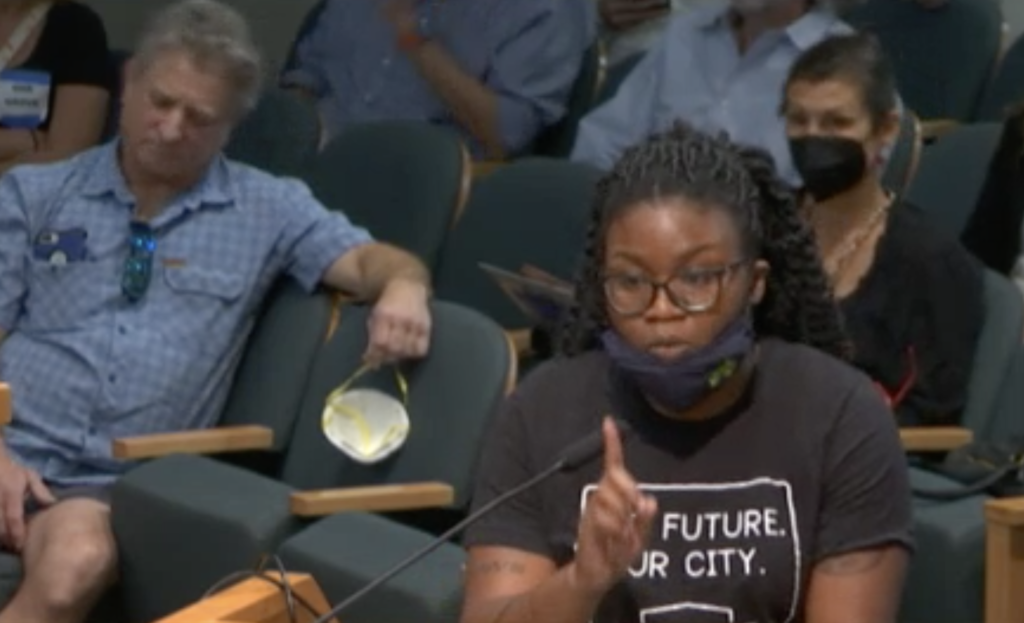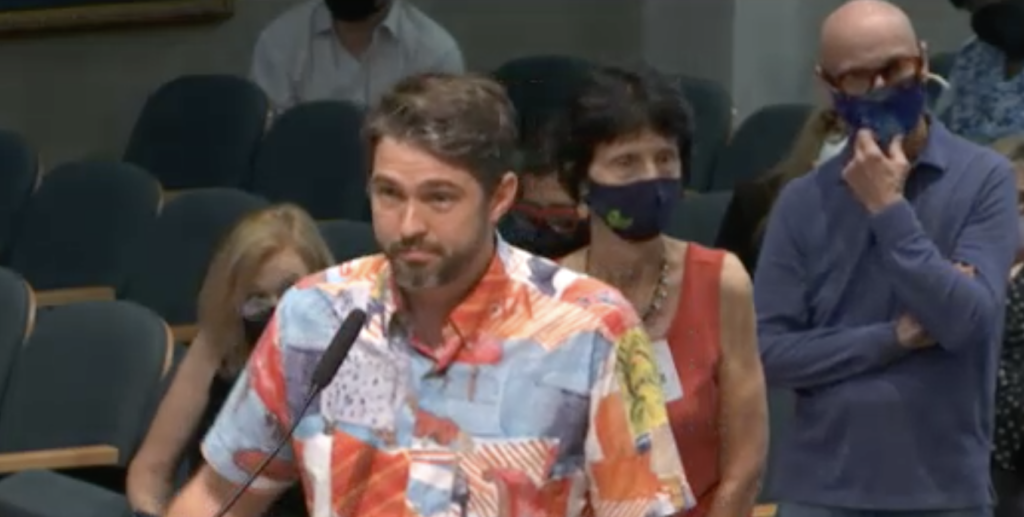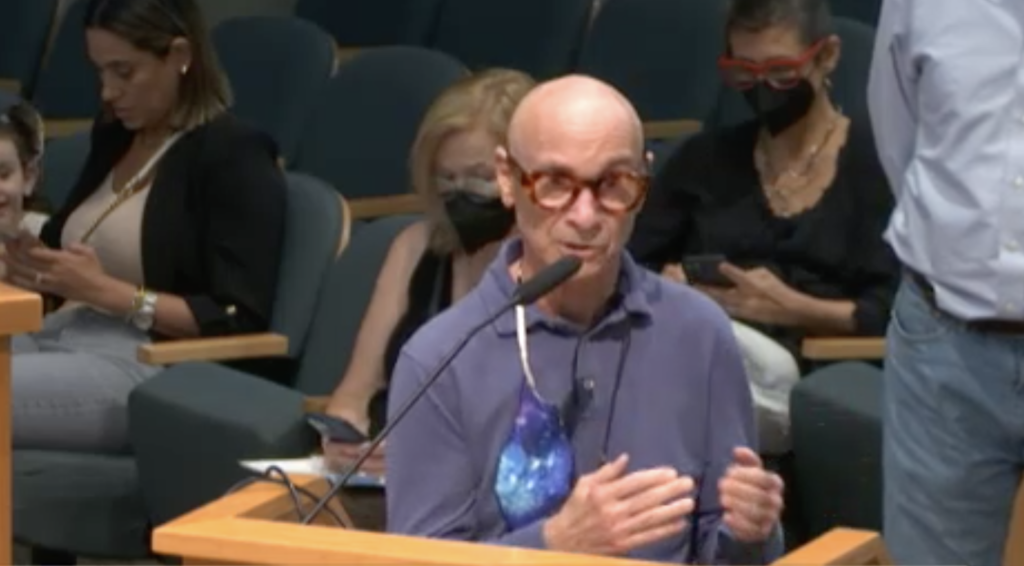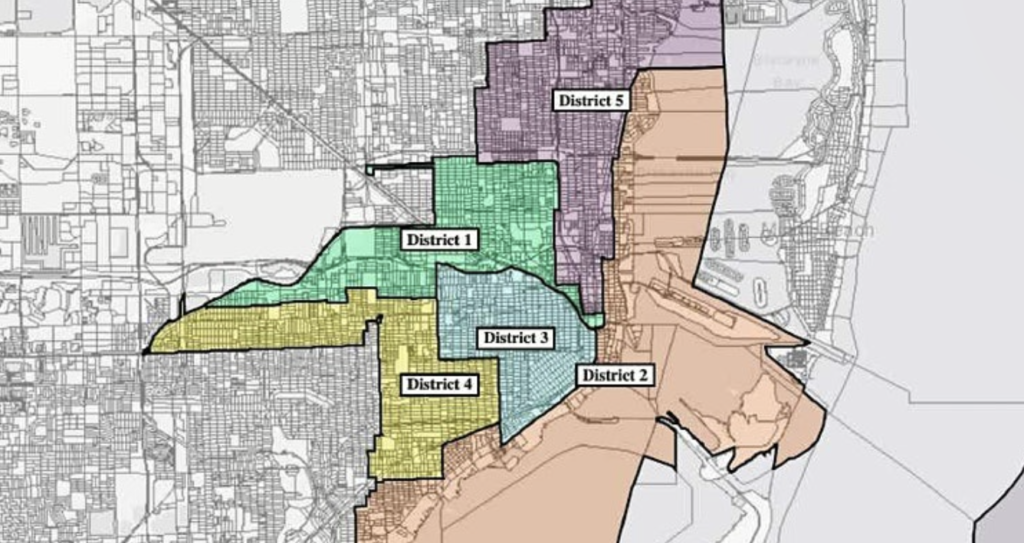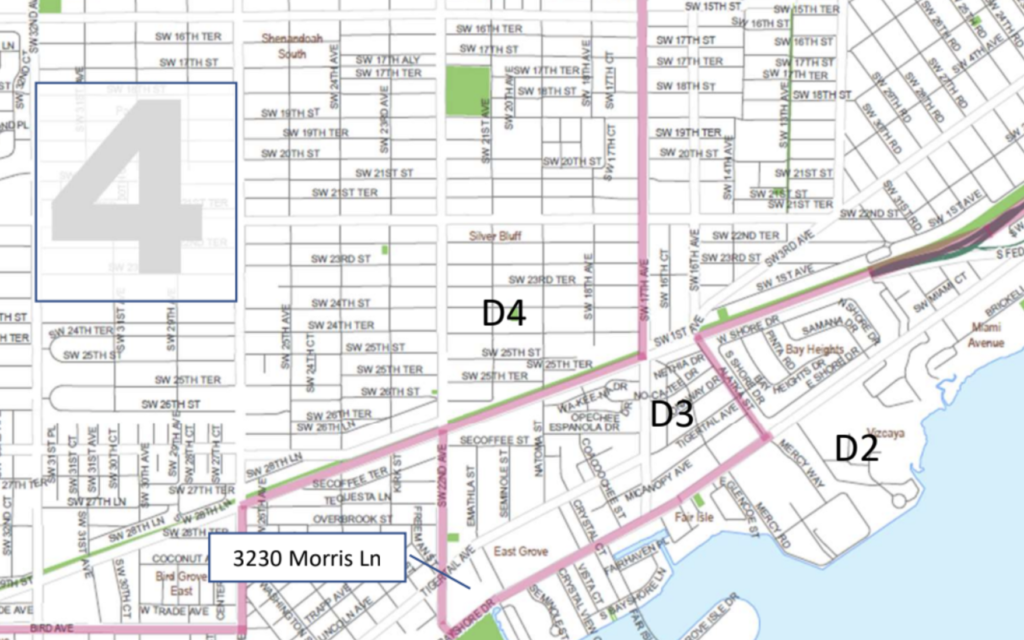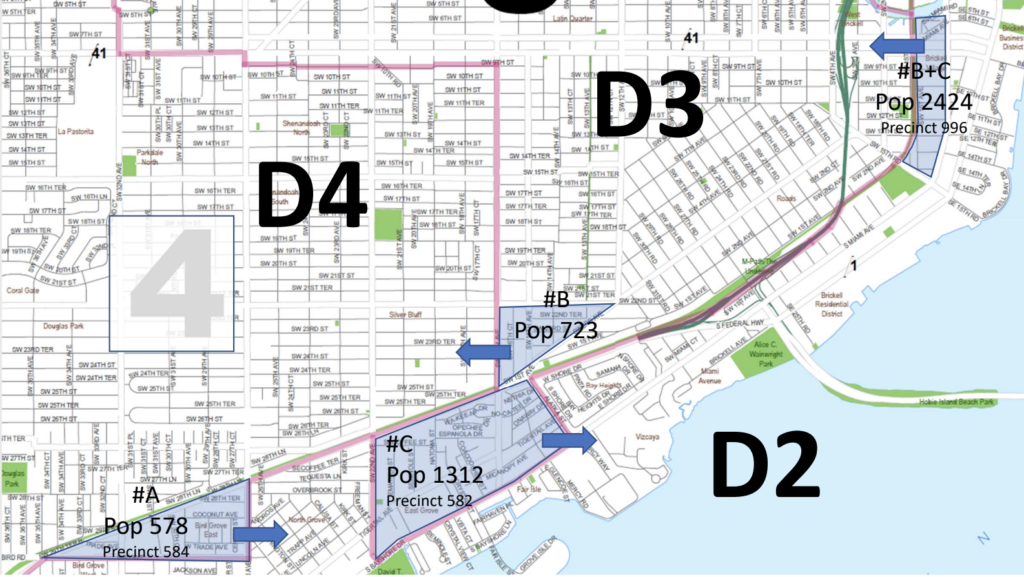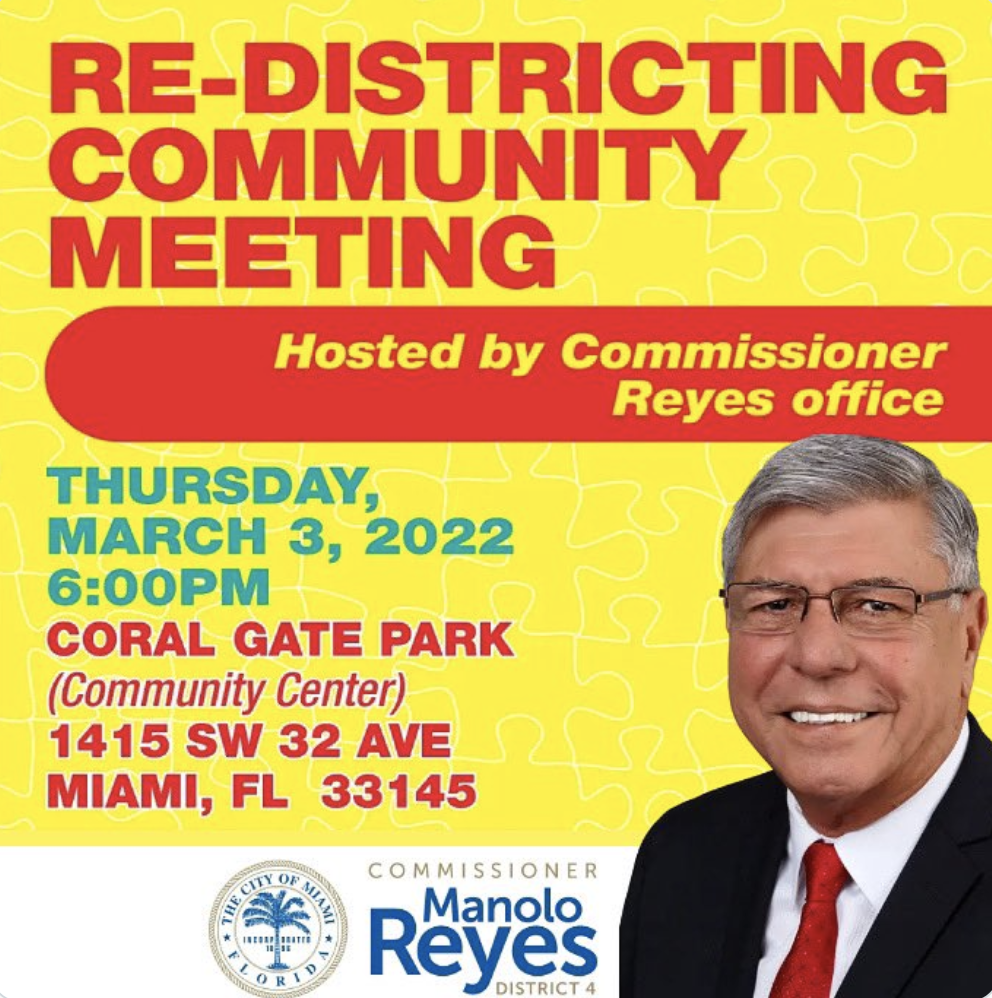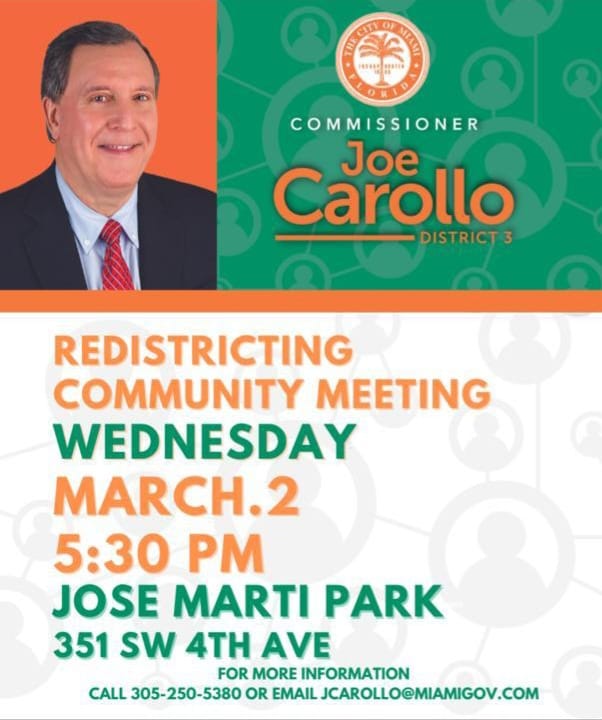But community meetings this week aim to seek resident input? Really?
One by one, nearly 100 speakers lined up and practically begged Miami city commissioners not to cut Coconut Grove into three pieces in the redistricting process. Of the 96 people who spoke against new maps that adjust district boundaries to accommodate population growth, 91 were from the Grove.
Two grown men cried.
Other leaders in other neighborhoods openly expressed jealousy at the display of unity and involvement. Other electeds in other places might openly express gratitude and admiration of such an engaged citizenry.
Not in Miami. Not Commissioner Alex Diaz de la Portilla, who called the speakers “activists,” as if that was a bad word, as if several people who spoke against dividing the Grove into three districts hadn’t come to City Hall for the first time in their lives.
Read related: Miami redistricting cuts Coconut Grove into three rather than add districts
The commission voted against them anyway, in a 4-1 vote to provide preliminary approval to the redistricting map drawn by veteran mappers Miguel DeGrandy, a former state rep and lobbyist, and Palmetto Bay Councilman Stephen Cody, a suspended attorney. The map takes from District 2, which has seen the most growth, and gives to districts 3 and 4.
But the growth has not been in the Grove and the community — black, white, old, young — wants to stay together as one. These Grovites, as they are called, have formed the One Grove initiative, demonstrated in front of City Hall and started a petition that had 1,821 signatures on Tuesday.
“We could have the Coconut Grove Arts Festival in two different districts,” said Coconut Grove real estate agent Tony Scornavacca.
Chris Baraloto, an FIU tree biologist and Coconut Grove Village Council member, said the March 11 deadline can be moved. “There’s no need to rush through the process,” he said, adding that it should go through a “peer review process” and it hasn’t. And he knows what these community meetings are going to be.
“Let’s not have puppet meetings next week and beyond where we are informed of the plans,” he said.
One of the criticisms about the map is that the redistricting process has lacked public input. The commissioners said there have been multiple public meetings, but those have been to force feed what they have already cooked, not to get any significant feedback from their constituents.
And they know this — as evidenced by the community meetings suddenly scheduled before the final vote March 11. Are they genuinely trying to get more input? Will they ignore that, too?
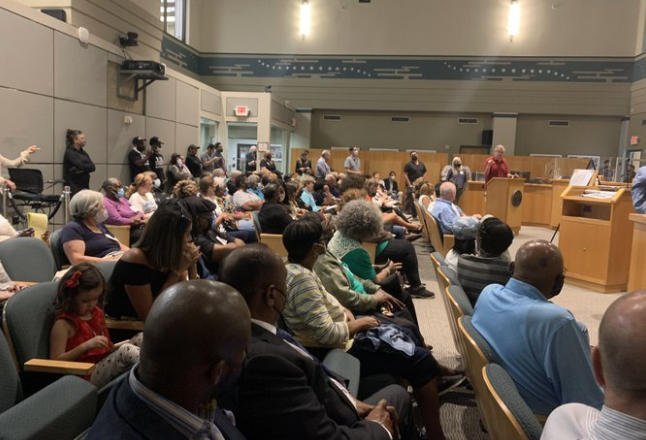
There was a community meeting Monday night for District 2 with Commissioner Ken Russell, but that was like the choir singing to the preacher. Russell, who was the sole dissenting vote Friday, has presented an alternative map that DeGrandy has admitted would also work.
It was standing room only, said Marisol Zenteno, past president of the League of Women Voters of Miami-Dade County and a one-time candidate for property appraiser.
Those same residents should go to the community meetings Wednesday in District 3 and Thursday in District 4 and make their case to commissioners Joe Carollo and Manolo Reyes, respectively, and make sure that DeGrandy is put on the record again on the alternate plan.
“They are really doing a disservice to voters,” Zenteno told Ladra Tuesday, adding that none of the people she knows in Coconut Grove — and she knows a lot because she works with the churches there — knew anything about the redistricting until they were already carved up. She said black voters are being moved into a district that is 88% Hispanic, which could be a violation of voters’ rights.
The ACLU has taken notice. It has issues with the way the process in District 5 (more on that later), but has also said that keeping the West Grove intact “would be consistent with the Commission’s stated goals of maintaining the core constituencies of existing districts, maintaining traditional communities, and keeping neighborhoods whole.
“While existing District 2 must shed population to achieve substantial equality, it can do so from its northern end and from the west side of U.S. 1, permitting the West Grove neighborhood to remain together in District 2,” wrote Nicholas Warren and Abdelilah Skhir, staff attorney and policy strategist, respectively, at the ACLU of Florida.
That’s exactly what Russell did in his alternate map. And DeGrandy was “very, very clear that my draft map was possible,” Russell told Ladra Tuesday.
It has three basic changes from the map that was approved Friday. It puts the two sections of Coconut Grove moved to districts 3 and 4 back into District 2, leaving the Grove whole, and gives a block of West Brickell to District 3, in a neighborhood Carollo already represents.
Heck, he even lived there when he was elected in 2017, right?
Read related: Miami’s redrawn maps could save Joe Carollo’s house from lawsuit grasp
The rest of the proposed map — because some of District 2 in Wynwood, Edgewater and that area go to District 5 — is left the same in both versions of the map. The commissioner said it amounts to about 3,000 people that he needed to find someplace else and got that from about a block in Brickell.

“My changes, not only are they legally adequate, they will also fit all the criteria set by the commission,” Russell said. “It satisfies everything the commission asked him to do, it’s just a different way to do it.
“It’s simply a question of policy decision.”
Redistricting, from the federal to the local level, is mandated by law to ensure that citizens are equally represented and that minority protected groups do not have their voice diluted at the ballot box. Each of the five districts in the city have to be close enough in population so that the largest is not more than 10% larger than the smallest. Natural boundaries should be used. And historic neighborhoods should be preserved.
So what policy directives did the Three Amigos give DeGrandy and company that would result in the needless division of a historic neighborhood and shifting of African American votes to a predominantly Hispanic district? Other than getting Carollo’s $2.2 million Morris Lane house into District 3, how does this serve anyone?
Can someone please ask them this week?

